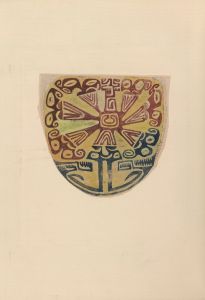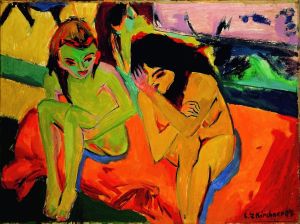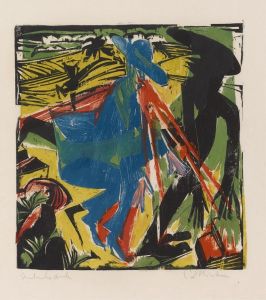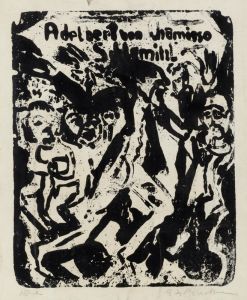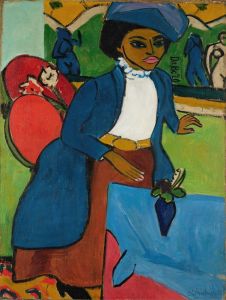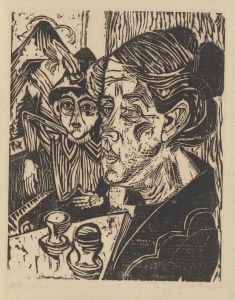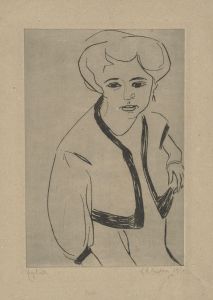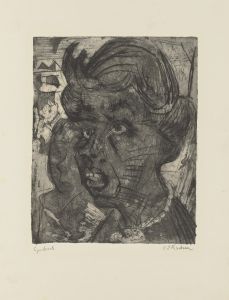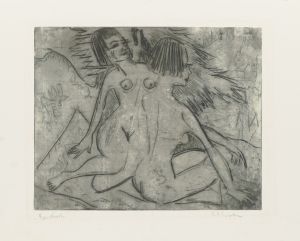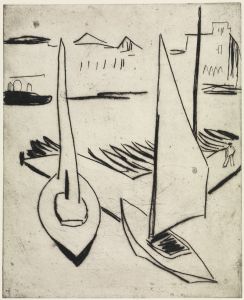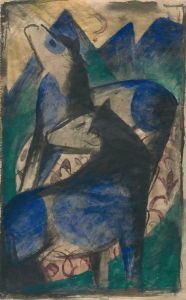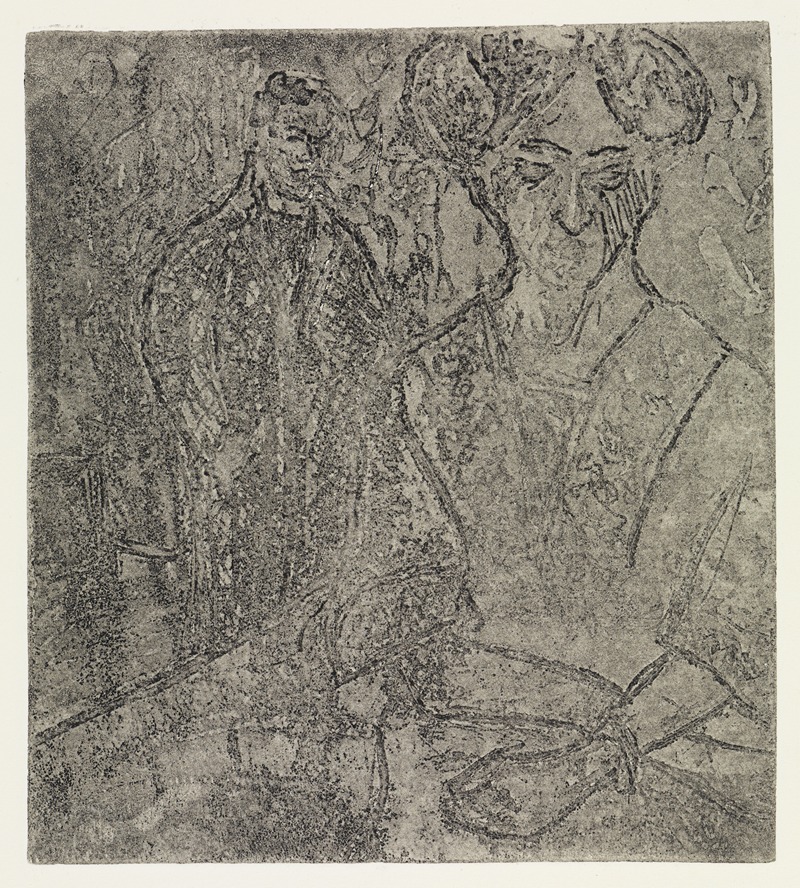
Mann und sitzende Frau
A hand-painted replica of Ernst Ludwig Kirchner’s masterpiece Mann und sitzende Frau, meticulously crafted by professional artists to capture the true essence of the original. Each piece is created with museum-quality canvas and rare mineral pigments, carefully painted by experienced artists with delicate brushstrokes and rich, layered colors to perfectly recreate the texture of the original artwork. Unlike machine-printed reproductions, this hand-painted version brings the painting to life, infused with the artist’s emotions and skill in every stroke. Whether for personal collection or home decoration, it instantly elevates the artistic atmosphere of any space.
Ernst Ludwig Kirchner, a prominent German expressionist painter and one of the founding members of the influential art group Die Brücke, created the artwork "Mann und sitzende Frau" (translated as "Man and Seated Woman"). Kirchner's work is renowned for its bold use of color, dynamic compositions, and emotive subject matter, which often reflect the tensions and vibrancy of early 20th-century German society.
"Mann und sitzende Frau" exemplifies Kirchner's distinctive style, characterized by its expressive brushwork and vivid palette. The painting captures a moment of interaction between a man and a woman, a common theme in Kirchner's oeuvre, where he often explored the complexities of human relationships and the psychological undercurrents of modern life. The figures in the painting are rendered with elongated forms and angular lines, a stylistic choice that Kirchner frequently employed to convey emotional intensity and movement.
Kirchner's work was heavily influenced by the socio-political environment of his time, as well as by his personal experiences. The early 20th century was a period of rapid change and upheaval in Germany, marked by industrialization, urbanization, and the lead-up to World War I. These elements are often reflected in Kirchner's art, which captures both the excitement and the alienation of modern urban life. His time in Dresden and later in Berlin exposed him to the vibrant yet chaotic energy of the city, which became a recurring theme in his work.
The relationship between the figures in "Mann und sitzende Frau" can be interpreted as a reflection of Kirchner's interest in the dynamics between men and women, a subject he explored throughout his career. His portrayal of women often oscillated between admiration and objectification, reflecting the complex gender norms of his era. The seated woman in the painting may be depicted in a contemplative or passive pose, contrasting with the more assertive stance of the man, highlighting the gender dynamics that Kirchner sought to explore.
Kirchner's artistic journey was also deeply personal. His experiences during World War I, where he served as a driver, left him with severe psychological trauma, which influenced his later works. After the war, Kirchner moved to Switzerland, where he continued to paint but struggled with mental health issues. Despite these challenges, his work from this period remained vibrant and innovative, continuing to push the boundaries of expressionism.
"Mann und sitzende Frau" is a testament to Kirchner's ability to capture the essence of human emotion and the complexities of interpersonal relationships. His work remains influential, offering insight into the expressionist movement and the cultural landscape of early 20th-century Europe. Kirchner's legacy is preserved in numerous collections worldwide, and his paintings continue to be studied for their artistic and historical significance.
In summary, "Mann und sitzende Frau" is a significant work within Ernst Ludwig Kirchner's body of art, reflecting his unique style and thematic concerns. Through his expressive use of color and form, Kirchner invites viewers to engage with the emotional depth and social commentary embedded in his work, making it a lasting piece of the expressionist movement.





